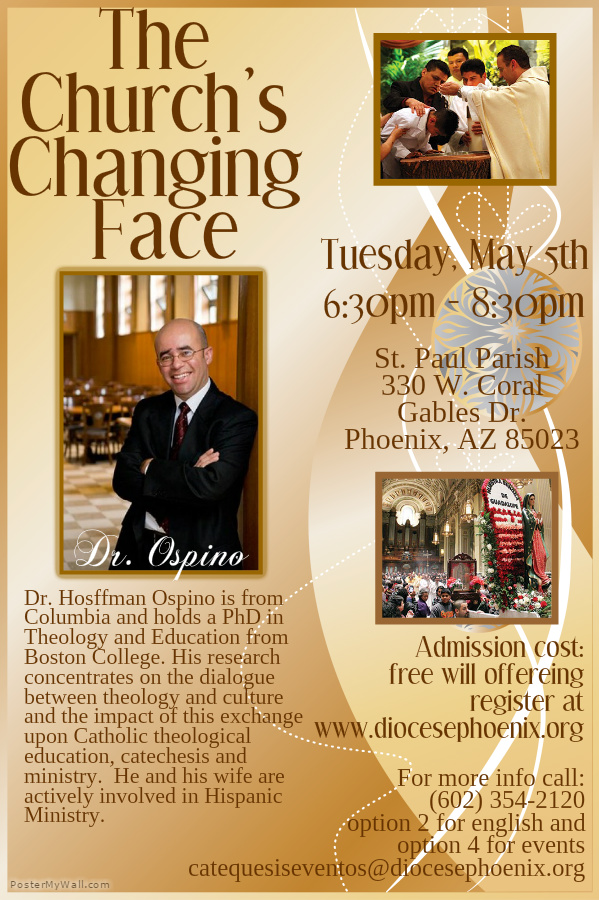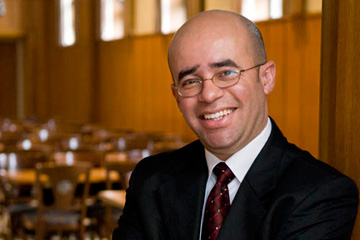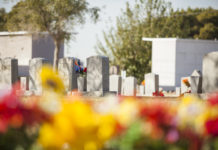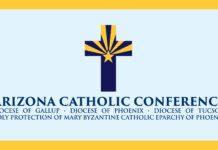At 40 percent of the total U.S. Catholic population, the number of Latinos in the Church continues to grow. The Diocese of Phoenix is no exception.

One of the nation’s foremost authorities on the topic, Dr. Hosffman Ospino, is heading to the Diocese of Phoenix to help church leaders understand and prepare for this growth and demographic shift. He will address priests during their Spring Clergy Day and the lay Catholic community during a free Hispanic Ministry Conference in English May 5 at St. Paul Parish, 330 W. Coral Gables Drive.
The evening public address will explore the explosive growth of Latinos in the Church and how it is changing the face of Catholicism in the U.S. Ospino, a Boston College assistant professor, researched the matter for a national study of Catholic parishes with Hispanic Ministry.
The findings guide study and understanding of the U.S. Catholic experience. They also provide a glimpse of what U.S. Catholicism could be like in many regions of the country.
“In parishes where Hispanics are present, the number of Catholics attending Mass is larger compared to the overall U.S. Catholic population,” the report said.
Pastors in the Diocese of Phoenix often notice a similar trend. Cristofer Pereyra, director of the diocesan Hispanic Mission Office, often hears pastors say that, even if the number of English Masses outnumber liturgies offered in Spanish, combined attendance at the Spanish liturgies are often greater than those at the English Masses.
More than half of the diocese’s 93 parishes offer at least one Mass each weekend in Spanish. Only eight currently offer more weekend Masses in Spanish than in English. Nine others offer an equal amount in each language.
“If you go to Spanish Masses, you see how alive the faith is there,” Pereyra said. “The best thing Hispanics are bringing — the ones that are here and the ones that are coming — is their love for the faith, their love for Christ and their traditional values.”
Pereyra is very aware of the dangers of Hispanics “leaving the faith and joining the [secular] culture” if parishes don’t effectively minister to them beyond a Spanish liturgy. Other groups of Catholics who came to the United States faced similar threats. That’s not to say everything needs to be duplicated in two languages, but there needs to be an understanding of when it is appropriate, Pereyra said.
“We cannot shy away form investing the time and resources we need for this population,” Pereyra said.
He hopes parish and ministry leaders who attend the Hispanic Ministry Conference leave with a better understanding of the impact Hispanic Catholics have on parish life, embrace related opportunities and begin to plan what the local Church will be 10, 20 and 40 years from now.
Pereyra can’t envision any local parish not offering at least one weekend Mass in Spanish at some point and some form of Hispanic Ministry. Nearly 40 currently don’t.
Carmen Portela, diocesan director of parish leadership support in Spanish, pointed to Ospino’s “10 signs of vitality” that describe parishes with a strong Hispanic Ministry.
“When parishes intentionally serve the Hispanics, they enter into transformation,” Portela said.
She hopes the conference opens minds of English-speaking parish and ministry leaders to help them better understand and plan for Hispanic outreach in either language. The Diocese of Phoenix has duplicated parish leadership support in Spanish since 2007.
Ospino’s national study of Catholic parishes with Hispanic Ministry revealed that parishes have a long way to go integrating Hispanic/Latino subgroups into the larger life of the parish. Most say that subgroups such as immigrants, children of immigrants and those born and raised in the U.S. are either “visibly, though not fully” or “minimally” integrated in the parish.
However, responses for the “minimally” and “not at all” options together yield a total of more than 50 percent for all subgroups. Life Teen, which offers youth ministry programming worldwide, announced today that it will begin to translate facets of its curriculum into Spanish and give ideas on how to inculturate certain activities to Spanish-speaking communities.







